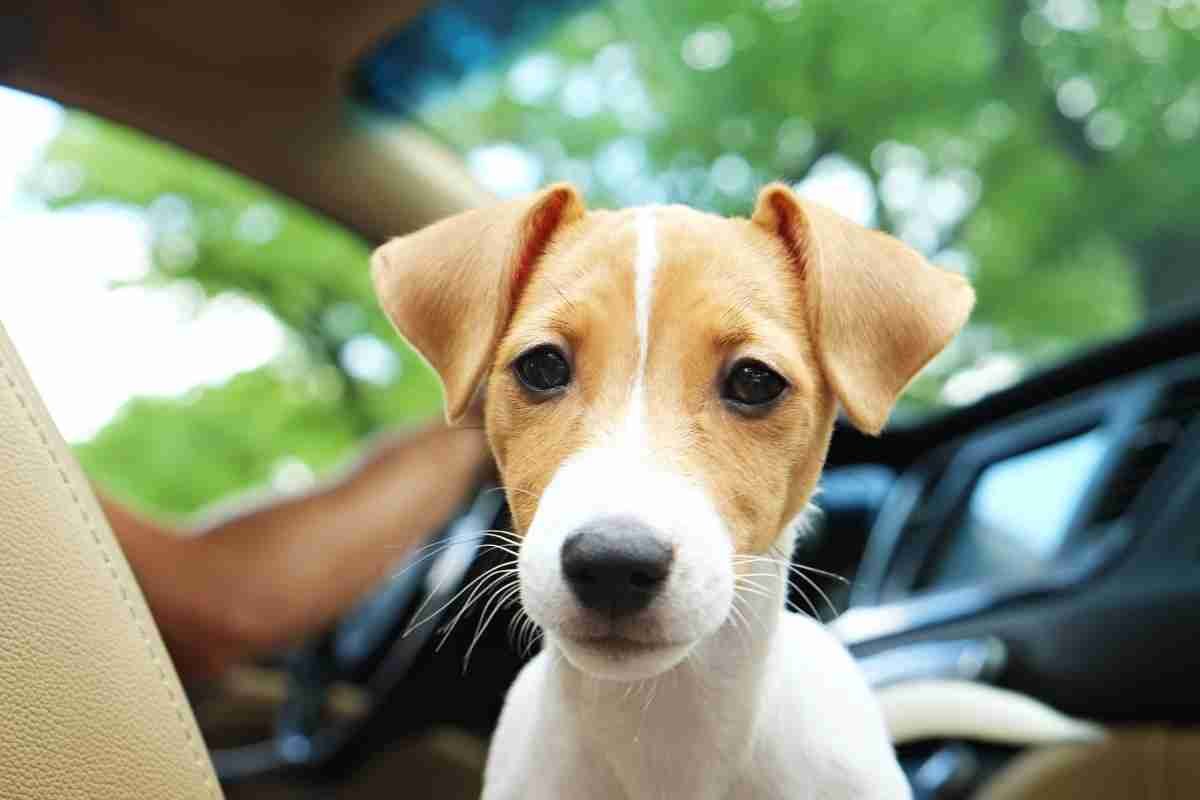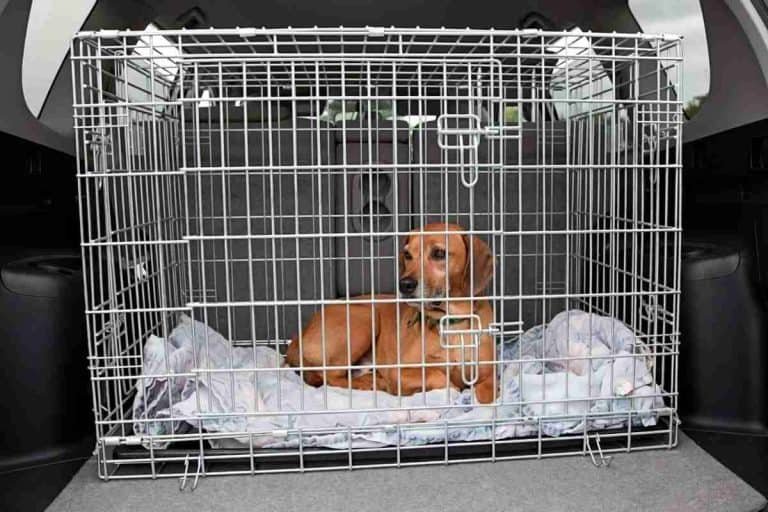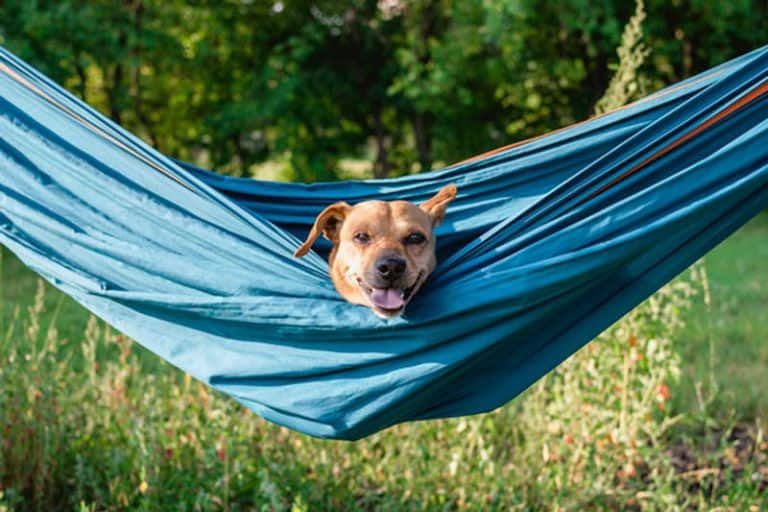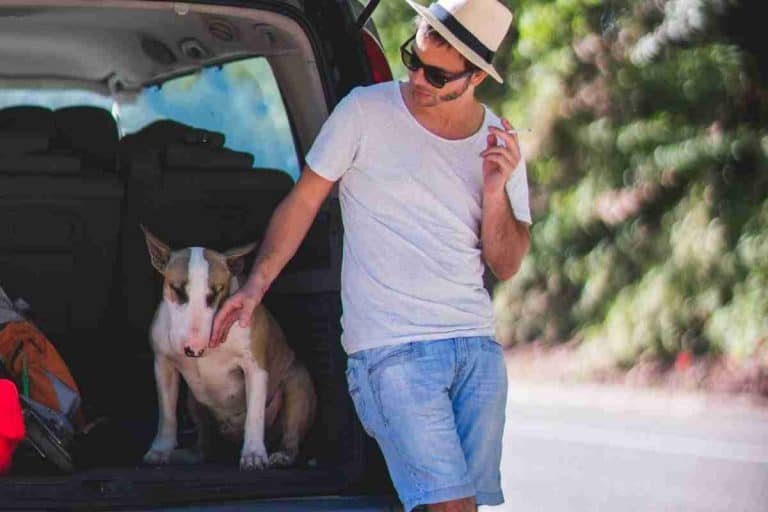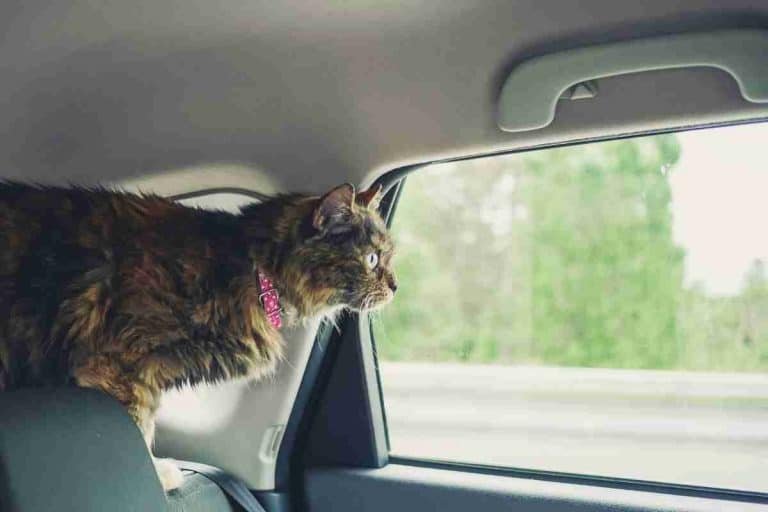8 Reasons Your Dog Poops in the Car — Causes, Prevention & What to Do
Last Updated on September 14, 2025
Many owners wonder why their dog poops in the car. 8 reasons your dog poops in the car explain most accidents: motion sickness, travel anxiety, missed potty breaks, excitement, and medical issues. Owners can learn the signs, pinpoint the cause, and choose the right fix.
This resource delivers clear causes, prevention, and what to do now. It outlines fast cleanup steps, safe restraint options, pre-trip routines, smart vehicle setup, and step-by-step desensitization. Training tips and medical guidance show when to call the vet and prevent repeat messes.
Common reasons dogs soil the car
Dogs soil cars for several clear reasons. Some result from physical discomfort. Others stem from emotions or training gaps. Identifying the cause helps owners prevent repeat incidents. Common categories include motion sickness, travel anxiety, overstimulation, sudden medical issues, missed bathroom opportunities, young age or incomplete house-training, and learned negative associations with travel. Observing timing, behavior before and during the ride, and stool consistency narrows the cause. Owners who want practical strategies for safer, calmer rides can consult resources on why dogs react emotionally in vehicles, such as Why Do Dogs Cry in the Car?
Motion sickness and nausea
Motion sickness triggers nausea and urgent bowel movements in some dogs. Puppies and brachycephalic breeds often show higher risk. Signs include drooling, whining, lip-licking, and visible restlessness. Preventive steps include short, frequent acclimation rides, keeping the car well-ventilated, and limiting heavy meals before travel. Over-the-counter remedies and prescription anti-nausea medications can help, but a veterinarian should clear any drug plan. For detailed motion-sickness strategies and stepwise desensitization, see No More Doggie Dramas: Motion Sickness Tips
Travel-related anxiety or fear
Fear-driven bowel accidents happen when dogs associate cars with stress. Vocalizing, panting, trembling, or attempts to escape often accompany soiling. Owners should use gradual desensitization: pair the vehicle with high-value treats and very short, positive outings. Calming aids, pheromone sprays, or a trainer-led counterconditioning plan can reduce anxiety. When anxiety seems severe or sudden, consult a qualified trainer or a veterinarian for behavior medication options. Practical calming methods and natural remedies appear in 9 Natural Ways to Remedy Your Dog’s Travel Anxiety
Excitement or overstimulation
High arousal before or during a trip can override a dog’s bathroom control. Dogs may soil when excitement peaks at departure points or at destinations. Owners can lower arousal with a calm pre-ride routine: a short walk, controlled leash work, and quiet praise. Crate training or a secure car harness reduces movement and helps the dog settle. For broader packing and preparation tips that reduce overstimulation on the road, consult general travel guides like Essential Dog Travel Tips and Gear for Road Trips
Medical problems and sudden diarrhea
Sudden diarrhea or incontinence can indicate gastrointestinal illness, infections, parasites, or systemic disease. If soiling appears alongside vomiting, lethargy, blood in stool, or fever, seek veterinary care promptly. Chronic conditions such as inflammatory bowel disease can also cause accidents during travel. Owners should collect a stool sample when possible and avoid giving new foods before a trip. For guidance on whether a dog should travel with a medical condition, see considerations in Can a Pregnant Dog Travel by Car? and consult a veterinarian without delay.
Not being taken out before trips
Skipping pre-trip bathroom breaks is a common, avoidable cause. Busy schedules make owners forget quick walks, but even a five- to ten-minute break reduces accidents. Establish a consistent pre-departure routine: leash the dog, allow elimination, and offer water in moderation. For transport logistics, crate options, and ways to manage potty timing on longer journeys, review practical transport methods such as those described in How to Secure a Dog in Car With Leash
Young age or incomplete house-training
Puppies lack full bladder and bowel control and often need very frequent breaks. Incomplete house-training also leads to accidents during new or stressful situations. Short, supervised car outings paired with immediate praise for elimination outside accelerate learning. Use puppy pads sparingly; rely instead on consistent outdoor schedules and gradual exposure to car travel. Owners transporting young dogs can learn safe methods from posts like How to Transport a Puppy in a Car Without a Crate
Learned associations (vet trips, bad experiences)
Dogs can link cars with unpleasant experiences, like vet visits or storms, and respond with stress bowel movements. Counterconditioning reverses that link by building positive car memories. Start with the dog simply sitting in the parked car while receiving treats. Then progress to short drives that end at a fun location. If a dog outright refuses to enter the vehicle, follow stepwise protocols and seek a behaviorist. Practical behavior-focused advice appears at Dog Refusing to Get Into Car?
How to diagnose the root cause
Diagnosing why a dog poops in the car requires a methodical check of behavior, physical signs, timing, and recent exposures. Owners should observe the dog before, during, and after rides. Record what happens, when it happens, and what the stool looks like. This information narrows causes such as anxiety, motion sickness, medical illness, or dietary problems.
Behavioral signals to watch for before and during rides
Look for anxiety cues that often precede accidents: panting, pacing, trembling, whining, hiding, or trying to bolt. Watch body language when the car appears; reluctance to enter suggests fear. During travel, repetitive circling, restlessness, or sudden freezing can indicate stress. If the dog only soils on specific routes or near particular locations, note those patterns. Consistent anxiety signs point to training and desensitization rather than a medical problem.
Physical signs that point to carsickness or illness
Carsickness often shows as excessive drooling, lip-licking, nausea, or vomiting. General illness shows as lethargy, fever, pale gums, or abdominal pain. Watery stool, vomiting, or collapse demands immediate attention. For tips on reducing motion-related signs, consult resources like how to make car rides enjoyable for motion-sick pups.
Patterns in timing, location, and stool appearance
Note when accidents occur: immediately after entry, mid-ride, or upon arrival. Immediate accidents suggest anxiety or inability to hold; mid-ride watery stool suggests motion sickness; bloody or mucous-containing stool suggests GI disease. Location matters — if accidents happen only in certain cars, smell or prior incidents may trigger the behavior.
Simple checks to rule out recent diet or parasite issues
Confirm recent meals, treats, or scavenging before rides. Ask when the dog last received deworming and vaccinations. Collect a fresh stool sample for a fecal exam if accidents recur. If diet change, foreign ingestion, or parasites likely, treat those first. If physical signs or abnormal stool persist, seek veterinary evaluation promptly.
Immediate steps to take when it happens
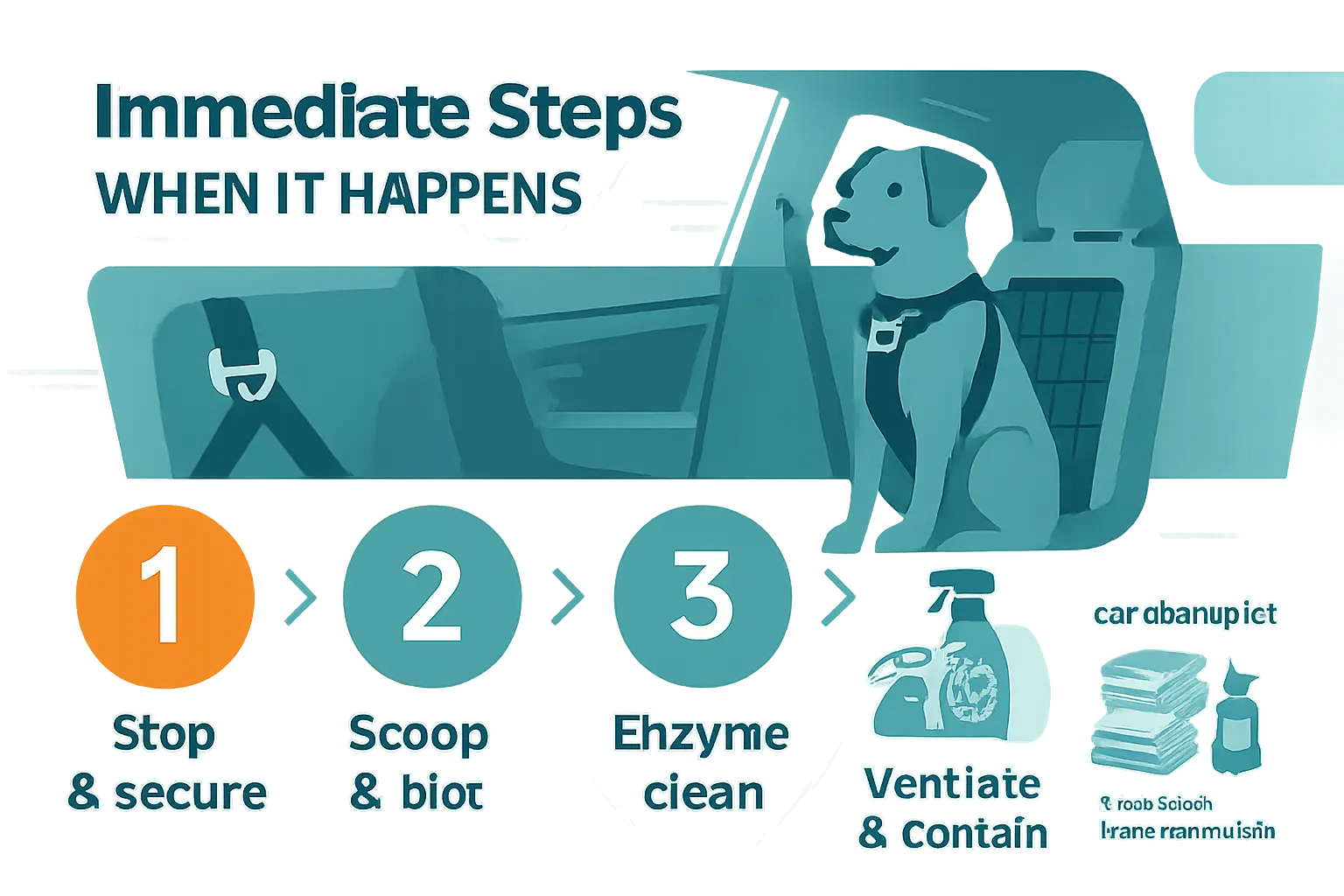
When a dog soils the car, owners need clear, fast action to protect the dog and the vehicle. Calm, efficient steps reduce stress and limit damage. The following subsections outline how to secure the dog, remove feces from upholstery, sanitize the area, and care for the animal to prevent spread of germs.
Securing your dog safely and calming them down
First, stop the car in a safe place. Keep the engine running only if needed for ventilation. Move the dog to a secure spot—either a crate, back seat with a harness, or the footwell—so the animal cannot shift and spill more mess. Use a soft voice and slow movements to reduce panic. If the dog shows motion sickness or anxiety, offer short breaks and water. For guidance on restraining and calming a dog in the vehicle, see how to secure a dog in car with leash.
Fast cleanup tips for seats, carpets and fabrics
Act quickly: scoop solids with disposable towels or plastic bags to avoid smearing. Blot, don’t rub, to lift residue from fabrics. For cloth seats, dilute mild detergent in warm water and blot repeatedly. Use a plastic spatula or card to remove hardened material from seams. For heavier contamination or crate liners, consider replacing disposable liners immediately. Advice on travel gear that protects interiors appears in the best dog crates for car travel guide.
Sanitizing, odor removal, and preventing re-marking
After initial cleaning, sanitize with a pet-safe enzymatic cleaner to break down odor-causing proteins. Follow product dwell times for best results. Open windows and use airflow or a portable fan to dry and ventilate. Sprinkle baking soda on dry areas and vacuum later to absorb lingering smells. To keep the dog from re-marking the same spot, remove scent traces, and place a washable cover over the cleaned area until fully odor-free. See recommended travel supplies in essential dog travel tips and gear for road trips.
Handling soiled dogs and preventing contamination
Contain the mess: put on gloves and use pet wipes or a quick rinse with lukewarm water to clean the dog’s rear and paws. Dry thoroughly and replace any soiled bandanas or harnesses. Put the animal in a breathable crate or use a towel barrier to stop contamination of the rest of the car. If the dog shows signs of illness, contact a veterinarian. For techniques to move and manage dogs in cars safely, review how to transport a puppy in a car without a crate. Keep a compact emergency cleanup kit in the vehicle for fast response.
Pre-trip routines that reduce accidents
Owners can dramatically reduce the chance a dog poops in the car by creating consistent pre-trip habits. Routines give the dog predictable signals and lower anxiety. A short checklist—feed timing, exercise, scheduled stops, and a packed travel kit—covers the main preventable causes.
When to feed and when to skip a meal
Feed adult dogs two to three hours before departure to allow digestion and a bathroom break. For puppies and seniors, feed earlier and reduce portion size on travel days. Skip a meal only for very short trips when a vet approves. Avoid feeding right before leaving; a full stomach raises the risk of an accident and motion sickness.
Exercise and bathroom schedule before leaving
Give a focused walk or play session 20 to 30 minutes before departure. Active movement stimulates the bowels and helps the dog eliminate. Allow at least one calm, supervised potty break immediately before loading. If the dog shows signs of anxiety, add a brief, calming routine such as a short massage or quiet time in the car before driving.
Planning stops on long drives
Plan bathroom stops every two to three hours for adult dogs. Increase frequency for puppies, seniors, or medical conditions. Research pet-friendly rest areas or parks on the route beforehand to avoid rushed pull-overs. When stopping, leash the dog and offer a 5–15 minute walk to encourage elimination.
Packing a travel kit (cleaning supplies, pads, changes of clothes)
Pack a compact kit with absorbent pads, waste bags, enzymatic cleaner, towels, a spare leash, and a change of clothes for drivers. Include a portable water bowl and small first-aid items. For packing tips and gear recommendations, consult essential dog travel tips and gear for road trips. Assemble the kit before each trip so it’s ready when needed.
Vehicle setup and comfort measures
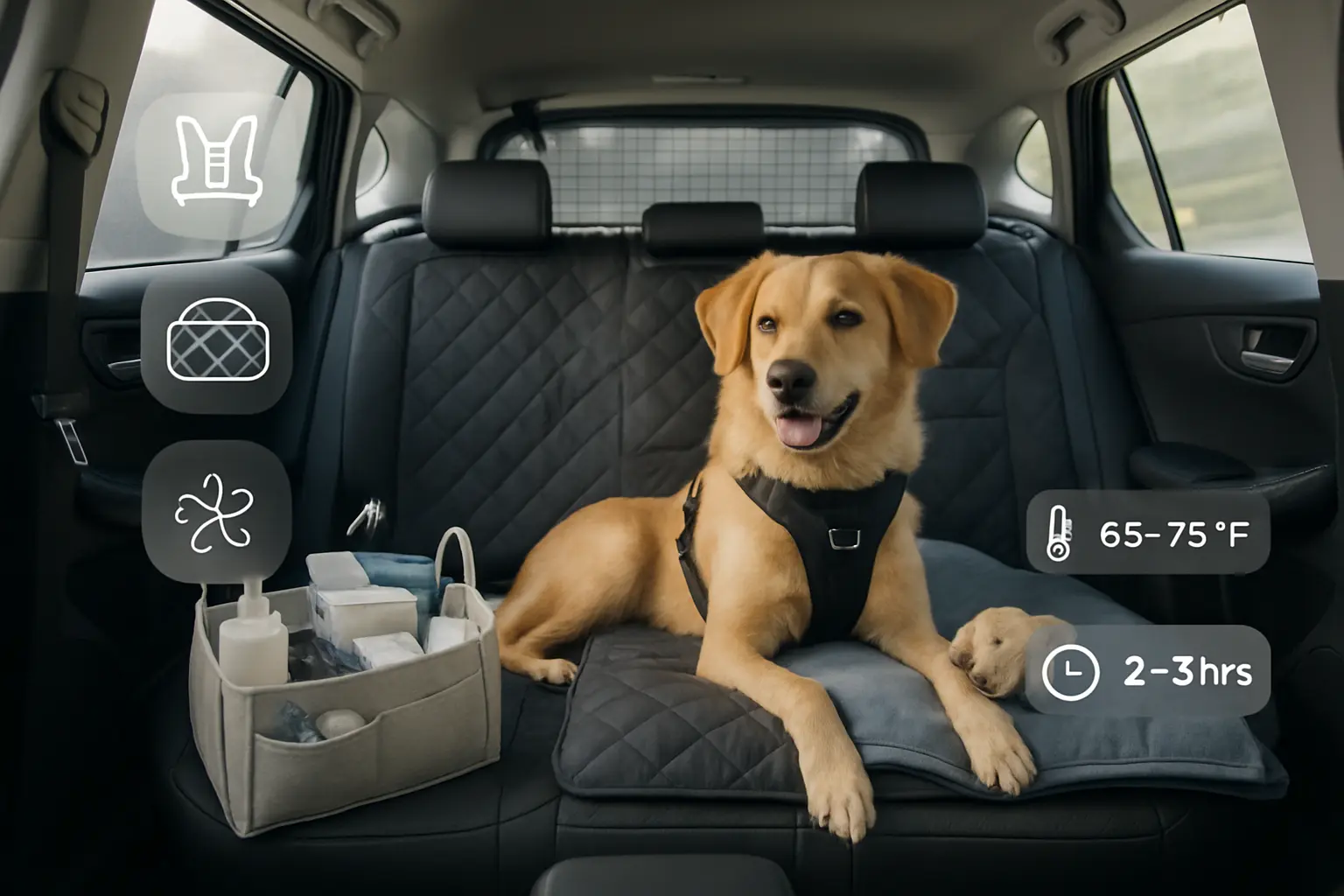
Thoughtful vehicle setup lowers the chance a dog soils the car by reducing stress and making trips predictable. Owners should choose containment, bedding, ventilation, and calming options that match the dog’s size, age and triggers. Secure setups cut motion and anxiety, and make quick cleanups easier when accidents still happen. For a practical checklist of travel gear and positioning, consult these essential dog travel tips and gear for road trips.
Keep a compact “car kit” with absorbent pads, enzyme cleaner, spare blanket and gloves. Test new equipment at home before long drives. Small changes in setup often stop repeat incidents by making the dog feel safer and more comfortable.
Crates, harnesses and barriers: pros and cons
Crates, harnesses and barriers each reduce stress and improve safety, but owners must match the option to the dog’s needs. Crates provide a den-like space for nervous dogs and limit movement during sudden stops. Choose a crate that lets the dog stand, turn and lie down. Secure it with straps or the vehicle’s anchor points so it cannot slide.
Harnesses attach to seatbelts or anchors and allow the dog to sit with some freedom. A properly fitted crash-tested harness reduces injury risk. Avoid tethering that allows the dog to climb into the front seat or to become entangled.
Barriers keep dogs in cargo areas or back seats. They work well for large breeds but offer less protection in a collision. For crate recommendations and car-safe containment ideas, see this review of best dog crates for car travel.
Bedding, familiar scents, and comfort objects
Bedding affects comfort and cleanup. Use a water-resistant base layer under a removable, washable cover. Memory-foam pads suit older dogs with joint pain; lighter foam or folded towels work for short trips. Avoid loose blankets that can shift or cover a dog’s face.
Familiar scents calm many dogs. A towel or toy that smells like home eases anxiety. Place the item where the dog can access it, but ensure it does not become a choking hazard. Rotate covers so one stays dry if an accident occurs.
Keep a small cleaning kit and spare bedding in the trunk. For tips on transporting puppies without crates and managing bedding during travel, refer to the guide on how to transport a puppy in a car without a crate.
Temperature, ventilation and seating position tips
Temperature control and airflow greatly influence a dog’s comfort and toileting behavior. Maintain moderate cabin temperatures. Dogs tolerate a narrower range than people, so keep the climate roughly between 65–75°F when possible.
Position dogs where they feel secure. Many prefer the rear seat or cargo area with a barrier. Avoid the front seat because airbags can cause injury. Use sunshades or window tinting to block direct sun. Crack windows just enough for fresh air without creating a strong draft.
Plan regular stops every 1.5–2 hours for exercise and bathroom breaks on long trips. For guidance that addresses motion sickness and seating choices, see no-more-doggie-dramas—how to make car rides enjoyable for your motion sick pup.
Calming aids (pheromones, wraps, supplements) and safe use
Calming aids can reduce travel stress when used correctly. Dog-appeasing pheromone sprays and wipes provide short-term comfort; apply them to bedding 15–30 minutes before travel. Pressure wraps like ThunderShirt work for many dogs by providing steady, gentle compression. Fit wraps snugly, and practice wearing them at home first.
Natural supplements such as L-theanine, certain probiotics, or melatonin sometimes help. Owners must consult a veterinarian before starting supplements. Avoid sedatives or medications not expressly prescribed for travel; some depress respiration or interact with other drugs.
Trial calming tools on short drives to confirm effectiveness. For evidence-based, natural approaches to travel anxiety, review 9 natural ways to remedy your dog’s travel anxiety. Always get a vet’s approval for dosing and combinations.
Training and desensitization plans that work
Effective training and desensitization reduce car-related toileting by addressing fear, nausea, and poor associations. A practical plan pairs short, predictable exposures with high-value rewards and clearly defined criteria for progression. Start with calm, stationary sessions and only advance when the dog shows relaxed body language and no elimination signs. Incorporate feeding, play, or chew toys in the car to build positive associations. Combine behavioral strategies with simple management: limit water only briefly before short trips, provide a secure crate or harness, and stop for bathroom breaks on longer drives.
For dogs with anxiety or motion sickness, consider complementary approaches. The site on 9 natural ways to remedy your dog’s travel anxiety lists calming aids and routines that pair well with desensitization plans. If progress stalls after consistent practice, consult a certified trainer or veterinarian to rule out medical causes. A succinct training log helps track triggers, trip length, and the dog’s reactions. Use that record when seeking professional advice or adjusting the plan.
Short, staged car exposure and reward steps
Begin with tiny, predictable steps that stay below the dog’s stress threshold. Stage 1: Sit calmly next to the parked car for two to five minutes. Reward calm behavior with treats and a favorite toy. Stage 2: Open the door and let the dog explore the vehicle for a minute. Reward and exit before the dog shows signs of stress. Stage 3: Sit inside with the engine off for short intervals while offering treats.
Each stage requires multiple successful repetitions across several days. Use high-value, quick-to-eat treats to reinforce calm behavior. Progress only when the dog remains relaxed for several sessions. Keep all sessions under ten minutes at first. Track successes and avoid forcing the dog forward. This staged approach builds confidence without triggering accidents.
Counterconditioning trips that end positively
Counterconditioning replaces negative car feelings with pleasant experiences. Design short “reward-only” trips that end with something the dog loves. Examples include a quick stop for play at a backyard, a favorite chew, or a short, familiar walk. Keep rides under five minutes during early counterconditioning.
Keep the driver neutral and low-key to avoid transmitting anxiety. Deliver rewards during or immediately after the ride so the dog associates the car with good outcomes. Repeat these positive trips daily if possible. Gradually vary the route and destinations, always ending on a calm, enjoyable note. Over time, the dog begins to expect positive endings and shows less stress-related elimination.
Gradual increase in ride length and complexity
Increase ride length and complexity using measured steps. Once the dog tolerates short reward trips, add five-minute increments. Alternate quiet, familiar routes with slightly busier ones. Introduce mild distractions, such as windows down for brief periods, then return to calm conditions.
Monitor signs of motion sickness and stress. If a dog pants excessively, drools, or looks nauseous, halt progression and return to the previous successful stage. For crate-trained dogs, lengthen crate time gradually. For harnessed dogs, increase seat time slowly. Maintain consistent scheduling to create predictability. Regularly reset to shorter rides if accidents recur.
Troubleshooting training setbacks
Training setbacks occur and require calm troubleshooting. First, check for medical issues: gastrointestinal problems or sudden incontinence can mimic behavioral elimination. If the dog suddenly regresses, consult a veterinarian. Second, review recent changes—new routes, loud sounds, or different drivers can trigger stress. Revert to the last reliable step and rebuild confidence with extra positive trips.
If motion sickness seems likely, try motion-sickness strategies and consult a vet about medication. If anxiety remains, enlist a certified behaviorist for structured guidance. Keep training consistent and brief. Celebrate small wins and record patterns of improvement. A steady, documented approach prevents repeated accidents and restores confident car travel.
When carsickness or illness is the cause — medical guidance
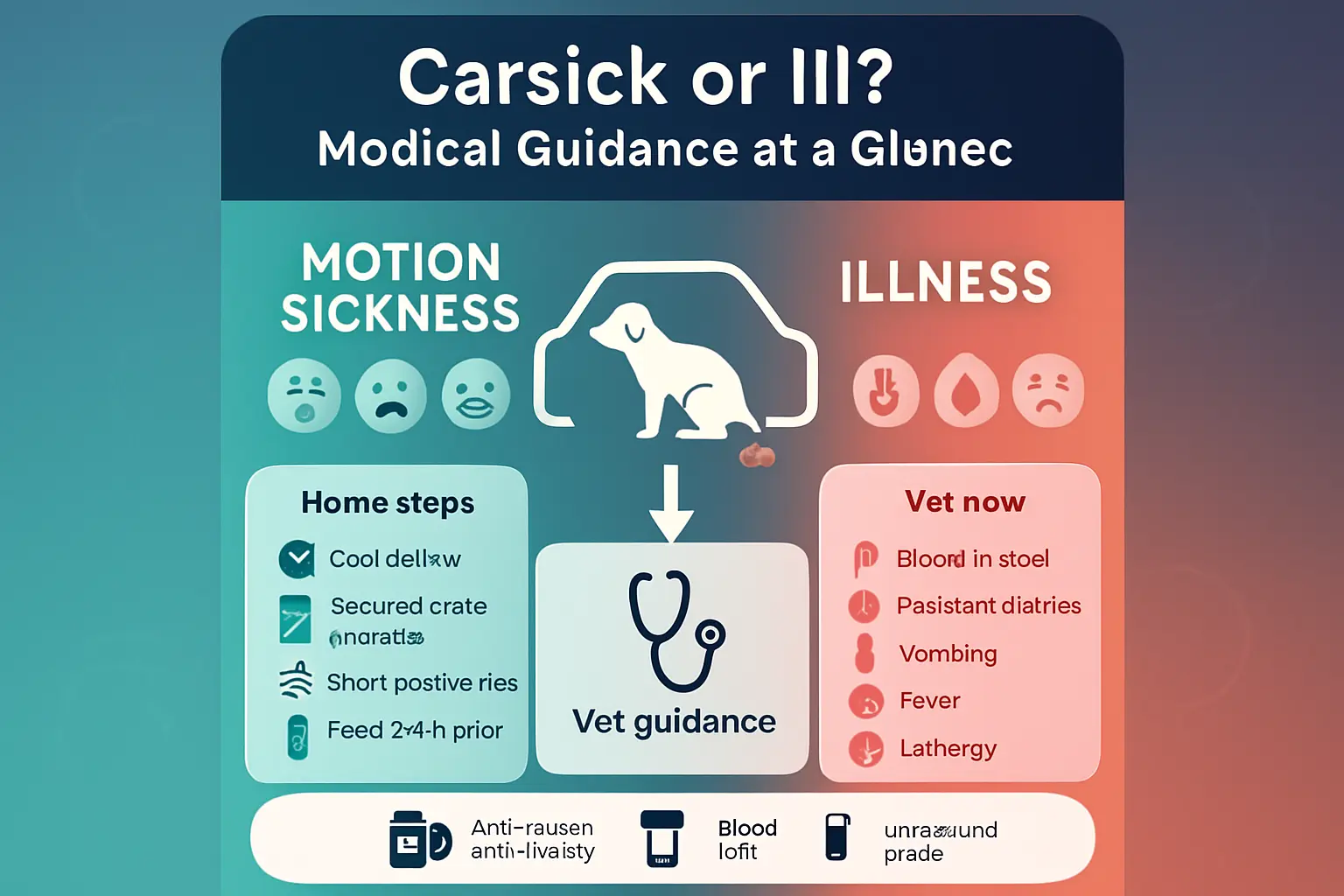
When a dog poops in the car, the cause may be true motion sickness or an underlying illness. Medical guidance focuses on separating transient motion-related episodes from gastrointestinal disease that needs diagnostics. Motion sickness typically appears only during travel and accompanies drooling, vomiting, or restlessness. Illness-related accidents often occur at home too and may come with lethargy, appetite change, weight loss, fever, or bloody stool. A veterinarian evaluates history, clinical signs, and may run basic tests to rule out infection, parasites, or inflammatory conditions before attributing accidents to motion alone. Owners who want practical conditioning strategies and motion-sickness management can consult resources on helping travel-anxious pups, such as No More Doggie Dramas — make car rides enjoyable for your motion-sick pup.
How to recognize true motion sickness
True motion sickness shows a consistent pattern tied to movement. Signs include excessive drooling, lip-licking, yawning, repeated swallowing, nausea, retching, and sometimes vomiting or defecation during or shortly after travel. Young dogs often outgrow it; older dogs with sudden onset likely have another cause. Timing helps: if the dog behaves normally at home, eats normally, and has no chronic diarrhea, motion is more likely. Observe whether symptoms start as soon as the car moves or after prolonged driving. Anxiety alone may cause whining and attempts to escape without nausea signs. For behavioral cues indicating distress in the vehicle, see explanations in posts like Why Do Dogs Cry in the Car?.
Home approaches versus veterinary treatments
Start with low-risk home measures before medicines. Offer short, frequent trips that end positively to desensitize the dog. Use secured crates or seat restraints to reduce vestibular stimuli. Keep the car cool and ventilated and avoid feeding for two to four hours before travel. Try nonprescription supports: ginger treats, dog-safe pheromone sprays, or a snug calming wrap. Behavioral training—gradual exposure paired with rewards—reduces both motion sickness and travel anxiety. If home strategies fail, or if vomiting, dehydration, or bloody stool appears, involve a veterinarian. For additional natural approaches to travel anxiety and stepwise calming methods, review 9 Natural Ways to Remedy Your Dog’s Travel Anxiety.
Medications vets may prescribe and safety notes
Veterinarians choose medication based on whether nausea or anxiety predominates. Common antiemetics include maropitant (Cerenia) and ondansetron; veterinarians prefer these for reliable nausea control. Antihistamines such as dimenhydrinate or diphenhydramine can help mild motion sickness but cause sedation. For severe anxiety, short-term use of trazodone or a benzodiazepine may appear in a travel plan. Never give human medicines without veterinary approval; dosing errors and drug interactions can harm pets. Note side effects: sedation, paradoxical excitement, dry mouth, or gastrointestinal upset. Vets often recommend a trial dose at home to confirm tolerability before travel. Owners should bring medication instructions and a travel first-aid kit; for practical packing and gear tips, consult travel-prep guides like Essential Dog Travel Tips and Gear for Road Trips. Always follow the veterinarian’s prescription and monitoring advice.
When gastrointestinal disease requires testing
Persistent or recurrent accidents, especially with systemic signs, require diagnostic testing. Red flags include continuous diarrhea, blood or mucus in stool, fever, weight loss, severe vomiting, or a dog that refuses cars because it feels unwell. A vet will commonly request a fecal exam for parasites, basic bloodwork to assess organ function and inflammation, and sometimes abdominal imaging or ultrasound to check for obstruction, pancreatitis, or masses. If inflammatory bowel disease or chronic infection appears likely, the clinician may recommend dietary trials, endoscopy, or biopsy. Bring a fresh stool sample, a list of recent meals and medications, and notes on the frequency and context of car accidents. If signs meet urgent thresholds—dehydration, high fever, or persistent bleeding—seek immediate veterinary care rather than attempting only at-home fixes. For situations where a dog shows reluctance to enter a vehicle due to illness or discomfort, see related guidance at Dog Refusing to Get Into Car.
When to get professional help and a simple action plan
When a dog poops in the car, owners must decide quickly between self-help and professional care. If the incident is a rare accident on a long trip, immediate cleanup, containment and gentle reassurance usually suffice. If accidents recur, show worsening physical signs, or follow events like illness, stress or injury, the owner should contact a veterinarian and consider a behavior professional.
Start with a simple action plan: secure the dog in a crate or with a harness, remove and clean soiled bedding, note timing and triggers, and schedule a vet consult within 24–48 hours if needed. Simultaneously, begin short, low-stress practice rides to assess behavior and motion tolerance. For practical travel gear and trip-prep ideas that support safe dog car travel, consult essential dog travel tips and gear for road trips.
If signs point to medical or severe behavioral causes, book both vet and trainer appointments early. Coordinated care reduces recurrence and speeds recovery.
Signs that warrant a vet visit or urgent care
Seek veterinary attention immediately when a car poop incident accompanies any of these signs: visible blood in stool, persistent diarrhea, vomiting, lethargy, collapse, fever, severe abdominal pain, straining to defecate, or repeated accidents despite normal house-training. Pregnant dogs, senior dogs and those with known chronic conditions require prompt assessment.
Also prioritize urgent care after exposure to toxins, sudden change in mobility, or heat stress during a trip. A vet will check dehydration, infection, intestinal obstruction and systemic illness. For guidance on traveling safely with a pregnant dog and risks that make vet evaluation essential, see can a pregnant dog travel by car?
What a trainer or behaviorist can do differently
A qualified trainer or veterinary behaviorist develops a targeted plan that addresses the emotional triggers behind car accidents. They differentiate anxiety, motion sickness, excitement, and learned avoidance. A behaviorist can prescribe structured desensitization protocols, counterconditioning exercises and stepwise exposure to car cues.
Trainers add practical management: crate acclimation, clicker-based rewards for calm entry, scheduled pre-trip toileting routines, and leash/harness handling to reduce arousal. When appropriate, a veterinary behaviorist can discuss short-term medications or supplements to reduce anxiety during retraining. For non-drug calming strategies and travel-anxiety techniques, review 9 natural ways to remedy your dog’s travel anxiety.
What to bring: logs, videos and symptom notes
Accurate records speed diagnosis and training. Owners should bring a concise log showing date, time, trip duration, distance from last bathroom, food and water times, medications, crate or restraint used, and any unusual noises or events. Note stool consistency (formed, loose, watery) and color.
Record short video clips of the dog before, during and after a ride. Capture behavior when entering the car, during movement, and when the incident occurs. Include audio if whining or panting accompanies the event. Take photos of the crate setup, seat arrangement and any barriers used.
Organize records into a one-page summary for the vet or trainer. For tips on securing crates and car restraint setups to reduce movement and stress, see 5 ways to secure a dog crate in car.
Quick 7‑day action checklist to stop future incidents
Day 1: Clean the car, isolate waterlogged items, secure the dog in a familiar crate or harness and record the event. Call the vet if health concerns exist.
Day 2: Conduct a short, 5–10 minute stationary car session. Reward calm behavior, then return home. Maintain normal feeding and bathroom schedule.
Day 3: Take a 5–15 minute slow drive around the block. Stop for a short walk and a toilet break before returning. Note any nausea or anxiety.
Day 4: Crate-conditioning and brief car exposure combined. Use treats and a favored toy. Consider a probiotic or bland diet if stool was loose, after vet approval.
Day 5: Increase drive time by 10–20 minutes in a quiet, comfortable setting. Use a secure crate and low-light environment to reduce motion sensitivity. Review recommended car crates at best dog crates for car travel.
Day 6: Simulate the original trip’s conditions where the incident occurred. Implement calming routines and record behavior.
Day 7: Reassess. If accidents continue or health signs persist, book a vet and behaviorist consultation. Prompt professional help prevents escalation.
Summary
8 Reasons Your Dog Poops in the Car — Causes, Prevention & What to Do explains the most common triggers—motion sickness, anxiety, overstimulation, missed potty breaks, training gaps, and medical issues—and shows owners how to pinpoint the true cause through behavior cues, timing, and stool appearance. It outlines immediate cleanup and containment steps, plus practical pre-trip routines, vehicle setup, and proven training plans to prevent repeat accidents.
The guide also clarifies when a case needs veterinary attention versus behavior work, offering a simple 7‑day action plan and clear red flags for urgent care. With structured desensitization, smart gear choices, and coordinated vet/trainer support when needed, most dogs can learn to travel calmly and cleanly.
Key Takeaways
- Identify the cause: Watch for nausea signs (drooling, lip-licking), anxiety cues (panting, trembling), and patterns in timing and routes to separate motion sickness, fear, and medical problems.
- Use pre-trip routines: Feed 2–3 hours before departure, provide exercise and a confirmed potty break, and plan stops every 2–3 hours (more often for puppies and seniors).
- Set up the car for success: Secure a crate or crash-tested harness, add washable bedding and familiar scents, and keep temperature and ventilation steady.
- Clean and neutralize fast: Scoop solids, blot fabrics, then use a pet-safe enzymatic cleaner and ventilation to remove odors and prevent re-marking.
- Train progressively: Pair short, calm exposures and positive destinations with counterconditioning; increase ride length gradually and step back if stress returns.
- Know when to call the vet: Persistent diarrhea, blood in stool, vomiting, lethargy, fever, or repeated accidents despite training warrant prompt medical evaluation; vets may prescribe anti-nausea or anti-anxiety meds when appropriate.
FAQ
- What causes a dog to poop in the car? Common causes include motion sickness, travel anxiety, overstimulation, missed bathroom breaks, incomplete house-training, and medical issues such as GI disease or parasites. Observing signs and timing helps narrow it down.
- How can owners tell if it’s motion sickness or anxiety? Motion sickness typically includes drooling, lip-licking, swallowing, and sometimes vomiting or diarrhea during movement. Anxiety shows more panting, trembling, and escape attempts without consistent nausea signs.
- What immediate steps reduce mess and stress after an accident? Safely stop, secure the dog, and remove solids. Blot fabrics and apply a pet-safe enzymatic cleaner, then ventilate; clean the dog’s paws and rear to prevent contamination.
- How do pre-trip routines prevent car accidents? Proper timing of meals, a focused walk, and a confirmed potty break lower the urge to eliminate, while predictable stops and a calm loading routine reduce anxiety and arousal.
- Why should some cases go straight to the vet? Blood in stool, persistent diarrhea, vomiting, fever, lethargy, or rapid regression can signal illness that needs diagnostics and treatment, not just training.

